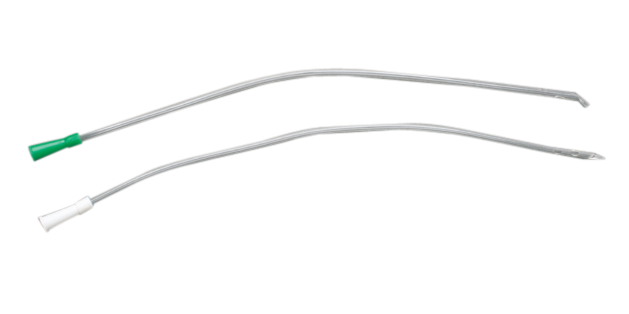Nelaton catheter A catheter is a foreign body that disrupts the protective function of the mucosal barrier. A urinary catheter chemically and mechanically irritates the mucosa causing inflammation and creating a favorable milieu for bacteria to grow and multiply inside the catheter and on its outer surface. The risk of infection increases with the duration of the catheterization.
[caption id="" align="alignnone" width="512"]

Nelaton Catheter (Tiemann)[/caption]
OBJECTIVE: To identify risk factors, consider catheter placement indications, and take measures to prevent hospital-acquired urinary tract infection.
AIM: To reduce urinary tract infections associated with medical care.
PATHOGENESIS, CAUSATIVE AGENTS AND AN ENTRY POINT FOR URINARY TRACT INFECTION associated with urinary catheters and the risk of infection
There are three ways in which microorganisms can enter the urinary tract:
– by catheter insertion, nelaton catheter
– upwards through the catheter lumen when handling and hygienically maintaining the catheter and
– upwards on the outer catheter surface from the periurethral area.
Possible entry points for infection:
– ostium of the urethra and the catheter area,
– contact between the catheter and the urinary sac attachment,
–
urine sampling point,
– urine release clamp,
– return of urine from the sac towards the urethra if the sac does not have a non-return valve or a dry chamber.
METHODS OF CATHETERIZATION AND RISK of urinary tract infection
The choice of the type of catheterization depends on the medical indication and the estimated duration of catheterization, which may be:
– Single catheterization;
– Intermittent catheterization;
– Short-term continuous catheterization;
– Long-term continuous catheterization;
– Condom catheter;
– Surgical stoma.
Ad bullet 1.
Single catheterization is suitable for urine sampling in acutely ill patients and for the management of transitional problems with urination; bacteriuria occurs in 1 to 5% and infection in 1% of patients.
Ad bullet 2. Intermittent catheterization is occasional catheterization, nelaton catheter mainly in young patients with spinal cord defects, which the patient can perform alone (so-called “clean” self-catheterization), in children with myelomeningocele and “neurogenic bladder” (cat. II). The risk of infection is lower than in patients with indwelling catheters.
